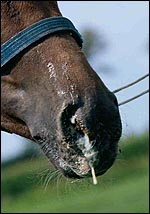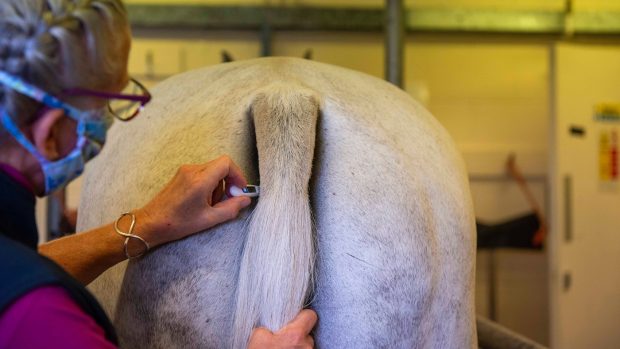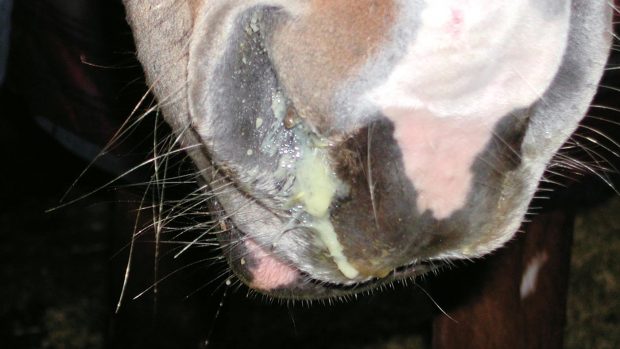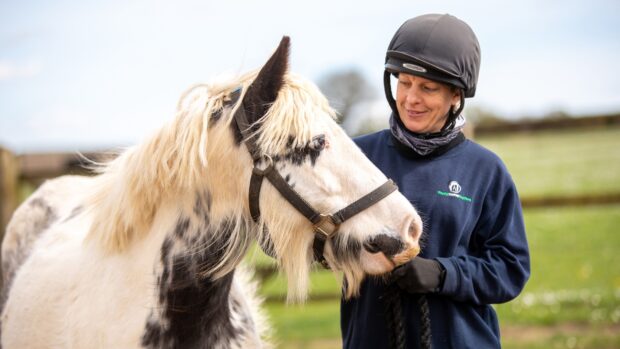Strangles, a deadly and highly infectious equine disease, is on the increase according to the Animal Health Trust (AHT). In a bid to wipe out the disease once and for all, the BHS and AHT launched a defensive campaign yesterday in London (Thursday 1 February) centred around the difficulty of diagnosis.
“You could describe a strangles carrier as a horse with a healthy coat, shiny eyes and pricked ears – in its early stages it extremely difficult to detect,” Graham Cory told HHO.
The campaign intends to raise £250,000 towards strangles research. Princess Anne, who was present at the launch, said: “This is the beginning of a serious campaign that could make a real difference.”
Princess Anne has a particular interest in the subject as last year the disease swept through her yard, affecting several horses. “Two of my horses suffered permanent damage. I learnt the hard way – I still don’t know where my strangles came from,” she explained. The Princess and her staff also witnessed the stigma attached to the condition and those that have come into contact with it. The stable girl who had been adminstering treatment to the horses was treated particularly badly. “No one spoke to the girl for weeks let alone gave her their hand,” the Princess explained.
The disease, which has been compared to the human plague, is triggered by the bacterium streptococcus equi. It is highly contagious, and can kill up to 10% of horses that contract it. Symptoms include fever, loss of appetite and a snotty discharge as well as lymph node abscesses as the disease develops. The swelling of these lymph nodes may restrict the airway, hence the name ‘strangles’.
In the majority of cases the disease remains in the head area (the disease manifests itself in the guttural pouch) but in instances of ‘bastard’ strangles it spreads to other parts of the body. Horses can become carriers of the disease without showing any exterior symptoms and go on to infect other horses.
An attack of strangles can economically destroy a yard; often it must be closed down for several months. The incubation period of the illness is seven to 14 days but because infected horses can shed the bacterium for long periods, the interval between new causes in an outbreak can be up to three weeks or more. Spreading occurs through shared water sources and contact between animals, even via human handlers and tack.
A new blood test is being developed at the AHT aimed at improving the veterinarian’s ability to identify infected horses. Treatment for the disease is not straightforward as antibiotics cannot penetrate the centre of an abscess where there is no blood supply. Early treatment with antibiotics can be helpful if lymph nodes have not become enlarged. The AHT is currently conducting exciting research to evaluate a new strangles vaccine for intramuscular administration.
Getting rid of strangles depends on research like this to improve methods of prevention and diagnosis. “We have a golden opportunity to stamp out this terrible disease. We can raise the necessary funds, we are confident we can tackle this problem effectively and stem the spread of strangles,” said Mr Cory. “If all of Britain’s 4.2 million riders were to make a contribution to the target of £250,000 they would only have to give 3p a year each.”
AHT Chief Executive Peter Webbon said: “Strangles must be beaten. We believe a solution can be found through our research programme. We urge everyone to help us and the BHS to end the suffering of horses and ponies caused by strangles.”
For more information or to donate visit: www.bhs.org.uk



